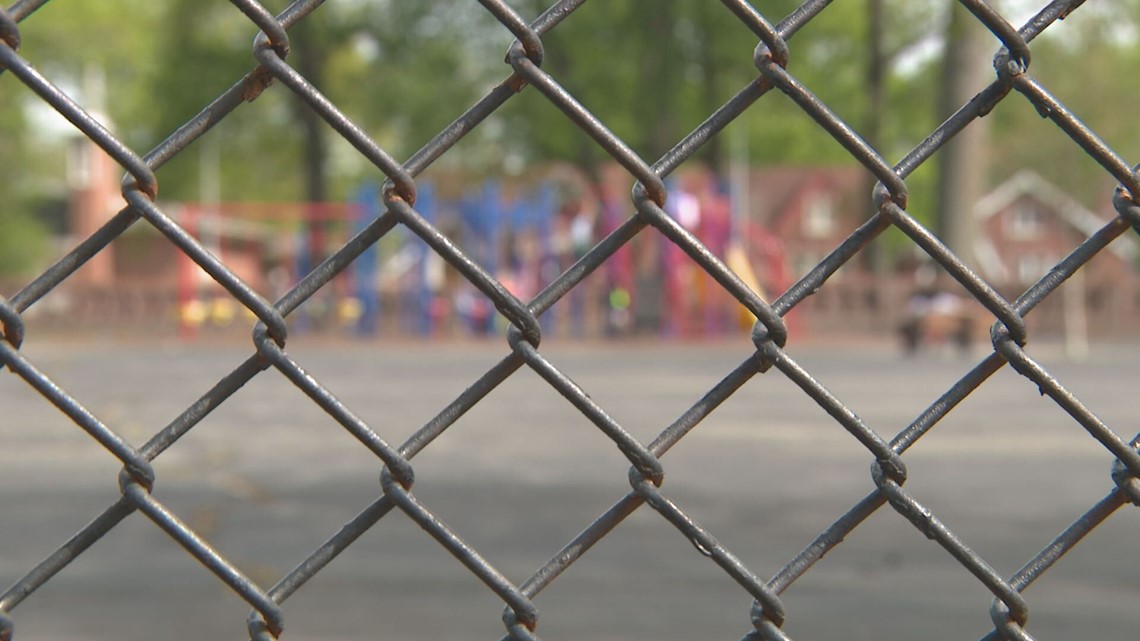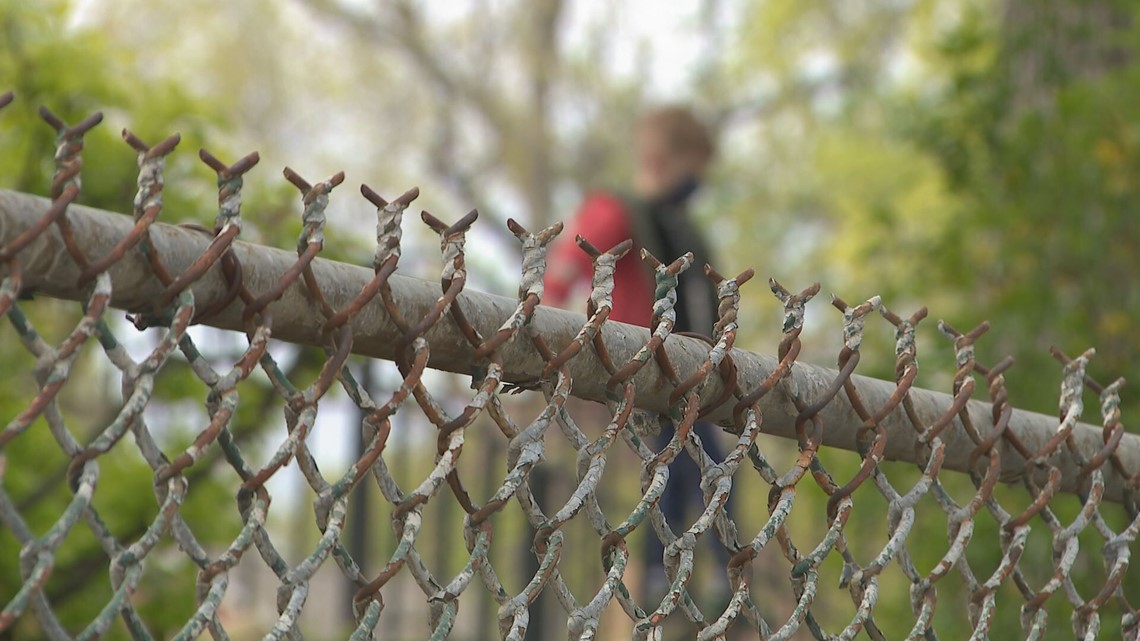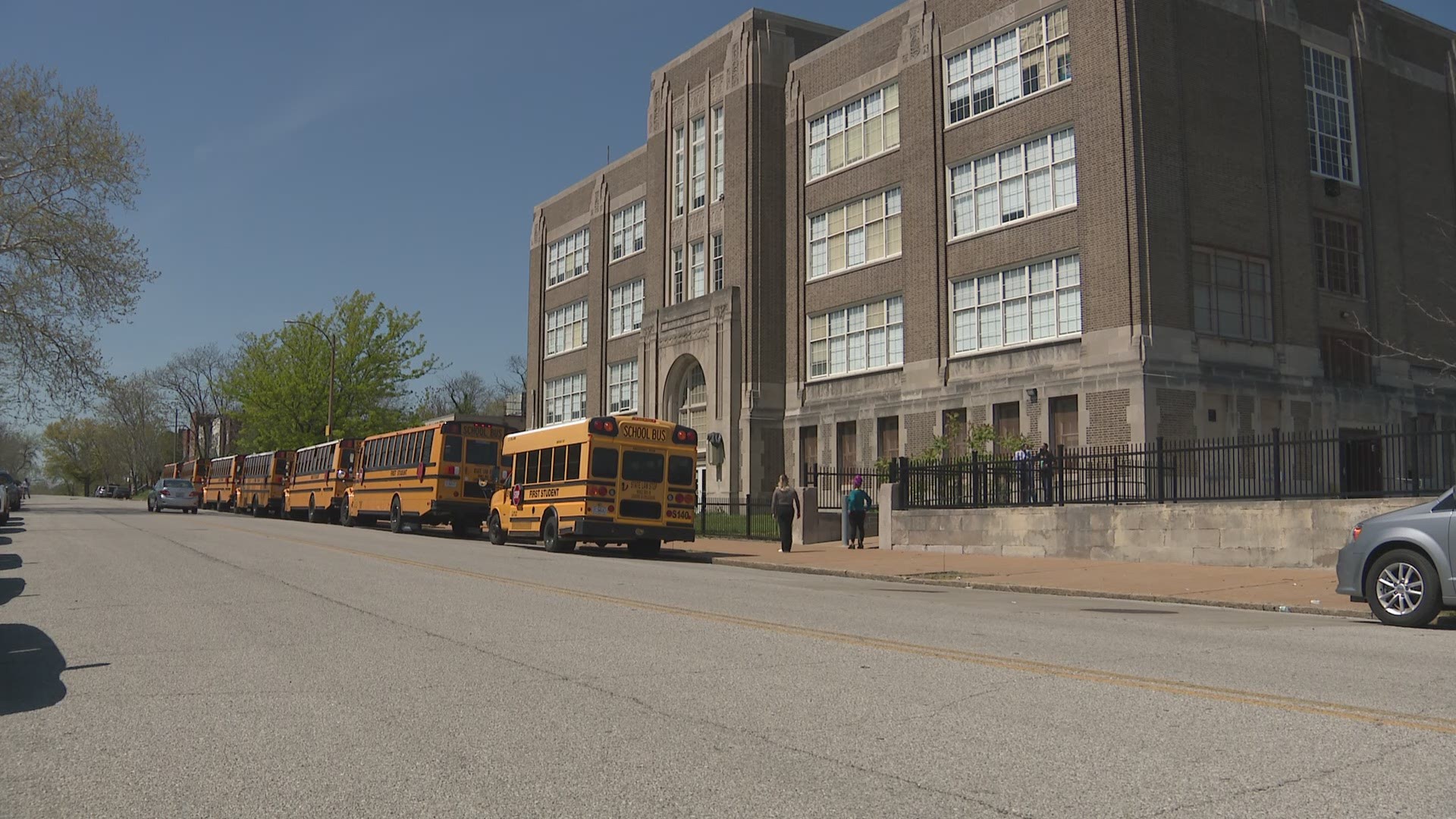ST. LOUIS — St. Louis’ architecture is steeped in history, including its schools. Like most buildings more than 48 years old, those schools are also harboring hidden sources of poisonous lead.
Stephen Snyder noticed it first on the chain link fence around his son’s elementary school.
“It frightened me. And I was quite concerned, not just for my own child, but for all of the children here, especially the younger ones,” said Snyder.
He recognized the characteristic alligator-skin pattern on the aging lead-based paint because he had recently removed the same hazard from his historic home. Snyder used a household lead testing kit on a fence at the school, which confirmed his fears. He shared his findings with the Saint Louis Public Schools Board of Education in late 2019.
In response, the school board brought in Jeff Faust of Environmental Consultants, LLC.
“It's not a surprise. All that fencing predates 1978. So, it is as expected,” said Faust.


Faust has worked in lead remediation for SLPS for more than a decade. The district asked Faust and his firm to test the fences and soil around 44 district elementary schools for the presence of lead. Only schools built before 1990 were tested.
“Lead was identified in virtually all the painted fences,” said Faust. “There are certainly elevated levels of lead in the soil at certain schools.”
Julie Weber of the Missouri Poison Control Center told the I-Team that’s especially dangerous for children younger than 6 years old, the age when a child becomes eligible for first grade in Missouri.
“The big concern is if it's chipping off or there's lead paint chips around that a child could ingest,” said Weber. “It could limit growth, it can have effects on the blood work and cause anemia or neurotoxicity, could be a risk that it may lower the IQ or lead to attention deficit disorder.”
Faust and SLPS told the I-Team their next step was to reduce the potential for students to touch the fences containing lead-based paint. That’s not what was found when 5 On Your Side visited 10 elementary schools with the highest lead levels.
As far north as Bryan Hill and as far south as Woerner, the I-Team witnessed students playing on and around the fences. Out of dozens of parents interviewed at the schools, not one of them knew about the presence of lead-based paint.
Dierdre Smith’s grandson attends Woerner Elementary in south city's Bevo neighborhood.
“They did not tell us about the lead,” said Smith. “I think more parents need to know… kids are putting jackets on the fence, running along the fence, touching their mouths. Yeah, it's sad.”
See the lead testing results for all 41 SLPS elementary schools in the interactive map below or by clicking here.
Test results acquired by the I-Team showed lead levels on Woerner's chain link fences were 40 times higher than the EPA standard for lead-based paint.
"Neither the federal government nor the state of Missouri require school districts to test their schools for lead-based paint at this time. And in the state of Missouri, there is no law requiring schools to test the drinking water for lead," said Faust.
In Illinois, the Department of Public Health required all schools in buildings built before 2000 to test drinking water for lead by 2018. Faust said there are also no lead-based paint testing requirements for Illinois schools.
The I-Team asked SLPS superintendent Kelvin Adams what the district has done to warn parents about the danger.
“It's not a normal practice every single time we do testing to send something out,” said Adams. “It was discussed in the board meetings in February and March of last year.”
The I-Team’s PJ Randhawa asked why students were not prevented from playing around and on the fences at the schools where contamination is present.
“That is something that we can do a better job of making sure that we get out to our staff,” said Adams. “I would say the district will do a better job in terms of publicizing.”
Faust told the I-Team that the only way to remove the source of contamination is replacing five miles of fencing, costing around $2 million.
“At this point of time we don't have a plan today to do the fencing. We have not decided to move forward with that,” said Adams. “We have some other priorities, obviously, where kids are in every single day, buildings that we will be working on in the summer.”


Since the danger won’t be going away, Snyder said he had to teach his son that the fence is a hazard.
“He doesn't understand the reasons. So we did have to tell him, we just said it was a poison and it's bad for you,” said Snyder.
Adams told the I-Team the school district's priority for now is remediating windows at some elementary schools that may also have lead-based paint.
Smith shared her concerns with that approach.
“So what are they saying they're going to do about it. Nothing?” she asked. “So really, we just praying that our kids don't come home with lead poisoning.”
How to protect your family
Weber recommends children wash their hands after playing in areas that have lead contaminated fences. She also suggests parents have their child's pediatrician check their bloodwork for lead levels.
The Missouri Poison Control Center is available 24 a day, 7 days a week to answer questions. You can reach them at 800-222-1222.
More information on Lead Poisoning Prevention can be found on the CDC's website.

